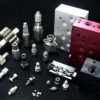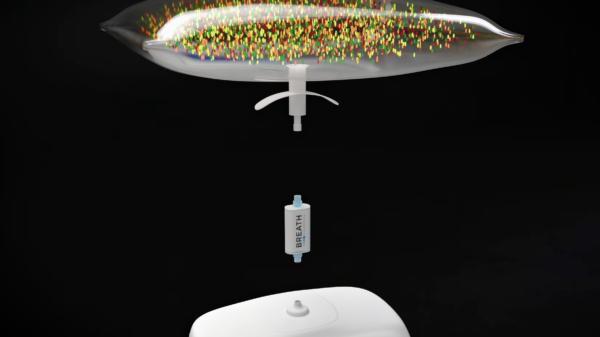Smokers tend to get lung cancer screenings according to a new study in the Journal of the American Medical Association.
Published on April 2, the study says that only 18 per cent of smokers went out for screenings in 2022. However, that isn’t true of other at-risk groups for other cancers. Evidently, 65 per cent of people recommended for breast and colorectal cancer screening got it, which is approximately four times more than smokers.
Annual low-dose computed tomography (CT) scans for lung cancer screening can reduce the death rate by up to 20 per cent by detecting tumours early, when treatment is more effective and the disease is more likely to be curable, according to the American Lung Association.
Lung cancer remains the leading cause of cancer death in the United States, responsible for about one in five cancer-related deaths. This year, the American Cancer Society projects that doctors will diagnose approximately 226,650 people with lung cancer, and about 124,730 people will die from the disease.
“Many individuals eligible for lung cancer screenings are open to receiving preventive care services,” said Alexandra Potter, a researcher with Massachusetts General Hospital in Boston.
“The data suggest that these individuals aren’t necessarily resistant to receiving cancer screenings—other factors are likely driving low rates of lung cancer screening.”
Potter explains that, unlike breast and colorectal cancer screenings which rely solely on age for eligibility, lung cancer screening involves more complicated criteria, including both age and detailed smoking history. She also notes that difficulties in accessing screening clinics likely contribute to the low participation rates.
Read more: Breath Diagnostics onboards new president and closes critical financing
Read more: South Korean research institution develops lung cancer breath test with 95% accuracy
Smoking cigarettes still primary risk for lung cancer
Researchers stress the importance of implementing interventions to increase awareness of screening and remove barriers that prevent high-risk individuals from getting screened.
For the study, the research team analyzed data from the Centers for Disease Control and Prevention (CDC) on nearly 28,500 people between the ages of 50 and 70 who qualified for screening.
Smoking cigarettes remains the primary risk factor for lung cancer. Smoking cigars, pipes, low-tar cigarettes, and menthol cigarettes can raise the risk just as much as smoking regular cigarettes.
The American Cancer Society recommends CT scan lung cancer screening for people aged 55 to 74 with a 30-year smoking history. This includes those who still smoke or who quit within the past 15 years.
A study from the Yale Cancer Center found that nearly half of people diagnosed with cancer in 2023 had smoked before. Fifteen per cent were still smoking when they received their diagnosis.
Secondhand smoke also causes lung cancer. According to the CDC, it kills 7,300 non-smokers every year.
Several factors can raise the risk of developing lung cancer.
Smoking remains the top cause, whether cigarettes, cigars, or pipes. Furthermore, low-tar and menthol cigarettes increase the risk as much as regular ones.
Personal or family history can also increase risk. Lung cancer survivors face a higher chance of developing another lung cancer, especially if they continue smoking. A family history of lung cancer can also raise an individual’s risk.
Read more: Breath Diagnostics pioneers novel lung cancer breath test
Read more: Breath Diagnostics takes aim at lung cancer with One Breath
There’s more to cancer screening than low dose CT
Several medical technology companies and startups are developing alternatives to low-dose CT scans for cancer detection. These methods aim to be less invasive, more accessible, and better suited for early detection.
GRAIL Inc’s (NASDAQ: GRAL) Galleri test uses a blood sample to detect early signs of cancer.
It searches for tumour DNA fragments in the bloodstream, known as cell-free DNA. These fragments carry methylation patterns that can signal the presence and origin of cancer. Galleri uses next-generation sequencing and machine learning to analyze the patterns. The test helps detect cancer at earlier stages, without relying on imaging.
Kentucky-based Breath Diagnostics is another example of a startup finding alternatives to traditional cancer diagnosis methods.
It created OneBreath, a non-invasive screening tool that analyzes a person’s exhaled breath to detect lung tumours. These tumours release volatile organic compounds (VOCs), which enter the airways. OneBreath captures a breath sample and analyzes it using advanced spectrometry and machine learning. The system looks for VOC patterns that may indicate cancer. This approach could offer a fast and accessible screening tool for clinics and primary care.
Owlstone Medical is also developing breath-based diagnostics with its Breath Biopsy platform.
It analyzes chemical biomarkers in exhaled breath tied to disease processes. The system detects VOCs linked to tumour metabolism. High-resolution mass spectrometry and AI help interpret the data. Breath Biopsy is in clinical trials and may offer a scalable, low-cost screening option for lung cancer.
.
joseph@mugglehead.com












